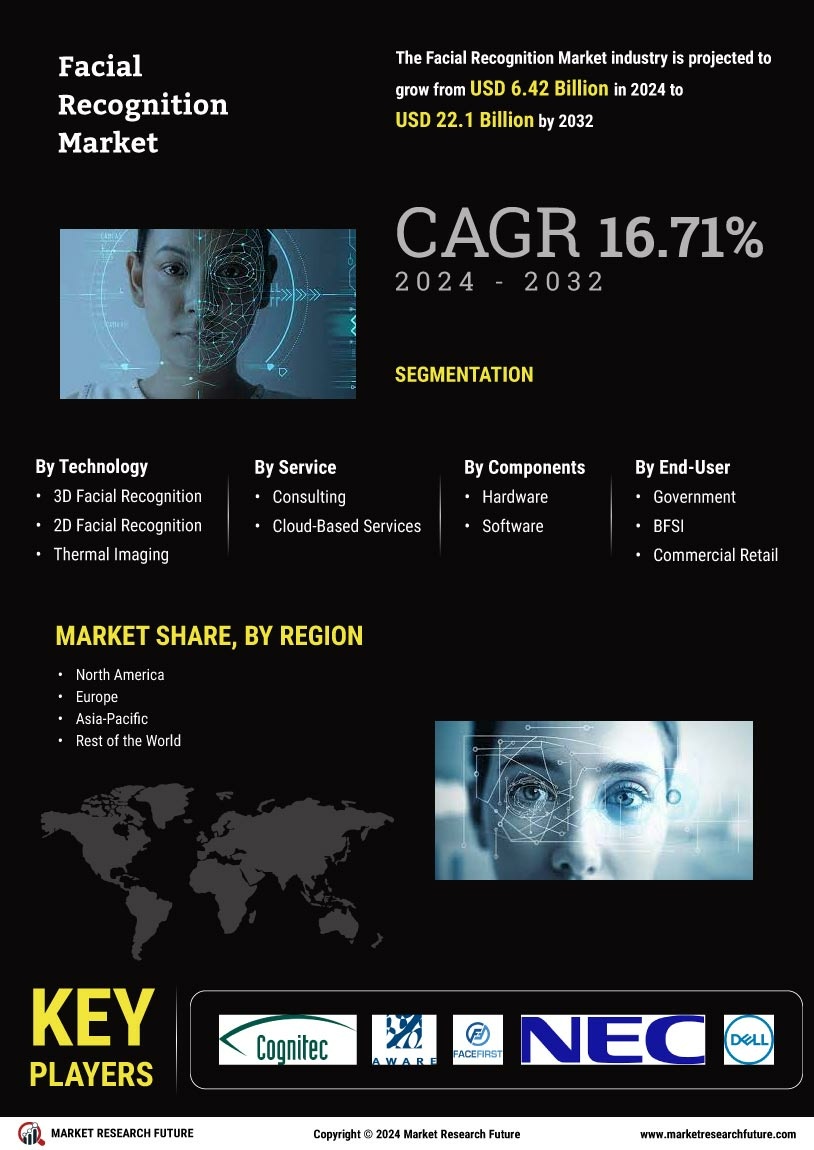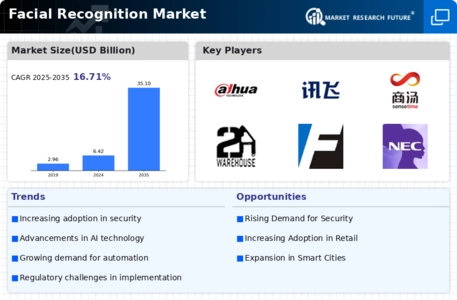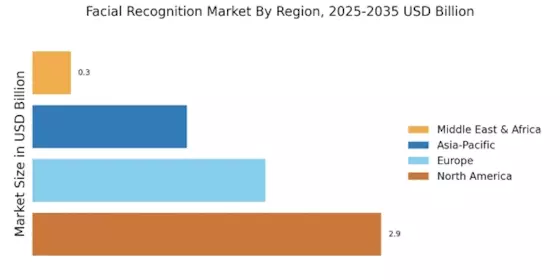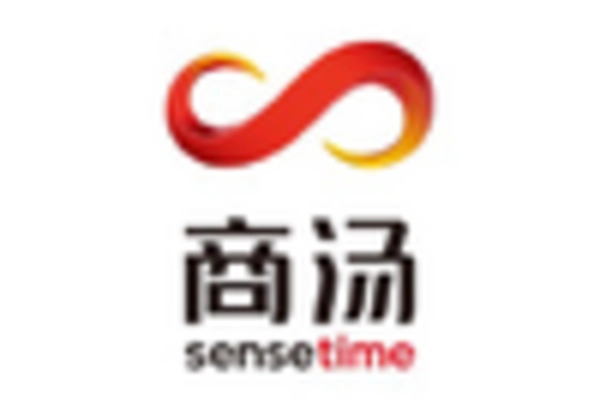Expansion of Smart City Initiatives
The Facial Recognition Market is benefiting from the expansion of smart city initiatives, which aim to enhance urban living through technology. Cities are increasingly adopting facial recognition systems for various applications, including traffic management, public safety, and crowd control. These systems provide real-time data that can improve city operations and enhance the quality of life for residents. As urban populations continue to grow, the demand for efficient monitoring and management solutions is likely to increase. Reports suggest that investments in smart city technologies, including facial recognition, could exceed 1 trillion USD by 2030, indicating a robust growth trajectory for the market.
Growing Use in Consumer Electronics
The Facial Recognition Market is increasingly permeating the consumer electronics sector, with devices such as smartphones and laptops incorporating facial recognition features for user authentication. This trend is driven by consumer demand for enhanced security and convenience, as facial recognition offers a seamless alternative to traditional password systems. Major technology companies are investing heavily in this area, leading to innovations that improve user experience and security. The market for facial recognition in consumer electronics is anticipated to grow substantially, with projections indicating a potential market size of around 5 billion USD by 2026. This growth reflects the technology's integration into everyday life, making it a staple in modern devices.
Rising Demand for Enhanced Security Solutions
The Facial Recognition Market is experiencing a notable surge in demand for advanced security solutions. Organizations across various sectors, including banking, retail, and transportation, are increasingly adopting facial recognition technology to bolster security measures. This trend is driven by the need to mitigate risks associated with unauthorized access and criminal activities. According to recent data, the facial recognition market is projected to reach a valuation of approximately 7 billion USD by 2025, reflecting a compound annual growth rate of around 16%. This growth is indicative of the technology's effectiveness in enhancing security protocols, thereby fostering a safer environment for businesses and consumers alike.
Regulatory Support and Standardization Efforts
The Facial Recognition Market is also influenced by regulatory support and standardization efforts aimed at ensuring ethical use of the technology. Governments and regulatory bodies are increasingly recognizing the potential benefits of facial recognition while also addressing privacy concerns. This has led to the establishment of guidelines and frameworks that promote responsible deployment of facial recognition systems. As organizations seek to comply with these regulations, the market is likely to see a rise in demand for compliant solutions. The establishment of clear standards may facilitate broader adoption, potentially leading to a market growth rate of around 12% annually over the next few years.
Technological Advancements in AI and Machine Learning
The Facial Recognition Market is significantly influenced by rapid advancements in artificial intelligence and machine learning technologies. These innovations enhance the accuracy and efficiency of facial recognition systems, making them more reliable for various applications. Enhanced algorithms and processing capabilities allow for real-time identification and verification, which is crucial in high-security environments. As a result, the market is witnessing an influx of sophisticated solutions that cater to diverse needs, from law enforcement to customer engagement. The integration of AI-driven analytics is expected to propel the market further, with estimates suggesting a potential market size of over 10 billion USD by 2027.
















